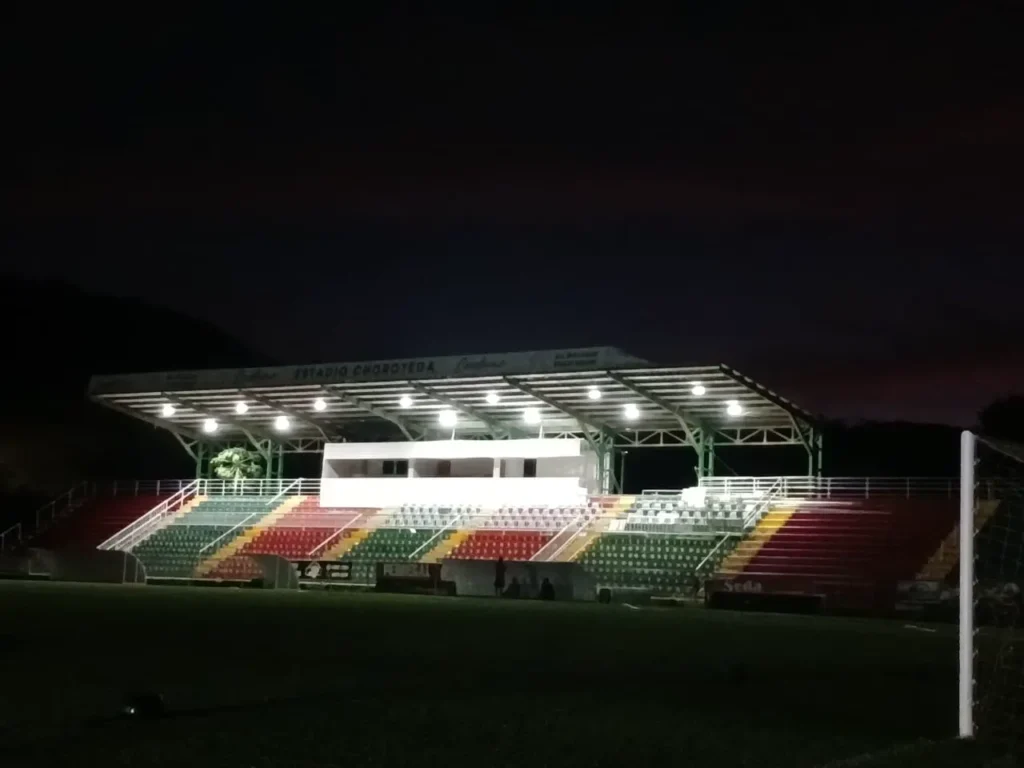Abstract
In Costa Rica, a global pioneer in renewable energy, a modern stadium has achieved world-class green lighting for its perimeter and public areas by introducing Sresky Atlas integrated solar street lights. This project not only meets the stadium’s stringent requirements for reliable and secure lighting but also aligns with Costa Rica’s national sustainable development strategy. According to recent data, more than 98% of Costa Rica’s electricity now comes from renewable sources, with the nation firmly committed to carbon neutrality.
I. Project Background and Requirements Analysis
1.1 National Vision and Project Positioning
Known as the “Green Country,” Costa Rica leads the world in renewable energy adoption. Under the FIFA Forward Program, the Costa Rican Football Federation (FCRF) completed Latin America’s first green sports complex renovation, emphasizing sustainable energy solutions. By 2025, the nation aims to continue powering its grid with hydroelectric, wind, and solar energy—driving all public infrastructure toward zero-carbon operation.
Positioned as a “green sports” demonstration initiative, this project integrates solar lighting into stadium construction to reflect national environmental goals.
As a multifunctional venue hosting events and community activities, the stadium demands complex lighting solutions. It includes grandstands, passageways, parking lots, and perimeter roads—all requiring comprehensive illumination. Estadio Alejandro Morera Soto (“La Catedral”) has already adopted solar systems, proving feasibility in real scenarios. This project focuses specifically on non-competition public areas to ensure safe evacuation and daily operation without relying on the traditional power grid.
1.2 Core Requirements and Challenges
Stadium lighting requires absolute safety and reliability. High foot traffic demands 100% illumination for evacuation routes after nighttime events—any outage could result in accidents. Requirements include:
-
Multi-scenario lighting modes: high output (>6000 LM) during events; low-power security lighting (30% brightness + PIR) for daily use.
-
High energy efficiency: Large stadiums face high electricity bills; zero-carbon lighting is essential.
-
Adaptation to tropical climate: High temperatures (>30°C), high humidity, and long rainy seasons (10+ consecutive days) challenge durability.
-
No structural changes: Upgrades must not affect turf or stands, making cable-free installation essential.
These challenges require an intelligent, robust, and cost-effective solution.
II. Technical Solution Design: Precise Alignment with the Sresky Atlas Series
2.1 Product Selection
The project deploys a hybrid configuration of Sresky Atlas models: SSL-34A for walkways, SSL-36A/38A for parking lots, and SSL-310A for perimeter roads. Luminous flux ranges from 2000 to 10000 LM, with OSRAM LEDs achieving 230 lm/W for high efficiency.
2.2 Key Technical Advantages and Applications
Core Technologies Deliver Event-Grade Reliability
ALS 2.2 intelligent power control predicts weather conditions and adjusts output to maintain baseline illumination. Even during 10+ consecutive rainy days, ALS guarantees more than 10 days of continuous lighting—significantly outperforming non-ALS systems.
TCS temperature control monitors battery status from –20°C to 60°C, extending cycle life to over 2000 cycles. High-efficiency monocrystalline panels (>21%) and large-capacity lithium batteries provide steady power, while BMS improves charging speed by 30%.
Smart Lighting for Multi-Scenario Use
The Super Remote enables customized settings:
-
Event Mode (M3): 70% constant brightness
-
Daily Mode (M1): 30% baseline + PIR activation
The PIR sensor (120°, 8 m) dynamically adjusts brightness, saving more than 50% energy. Optional hybrid charging (AC boost <30% battery) and app-based monitoring (battery status, scheduling, CCT) enhance operational flexibility.
Industrial-Grade Protection for Harsh Environments
IP65/IK08 protection ensures resistance to dust, water, and impact. Aluminum alloy + PC construction offers dual rust prevention. Modular components simplify maintenance and enable direct pole-mounted replacement.
Rapid, Damage-Free Deployment
The integrated, cable-free design ensures quick installation while protecting stadium infrastructure.
III. Project Implementation and Execution
3.1 Precise Lighting Planning
DIALux simulations guided lighting design:
-
Grandstand walkways: 6 m height, 22 m spacing
-
Parking lots: 8–10 m height, 28–32 m spacing
Uniform Type II light distribution eliminated blind spots.
3.2 Efficient On-Site Installation
The local team followed standardized procedures: excavating foundation pits, installing C20 foundation cages, and mounting brackets and luminaires. The short construction period minimized disruptions.
3.3 Scenario-Based Mode Configuration
Management teams preset Event Day (M3), Weekday (M1), and Holiday modes for one-touch switching.
IV. Project Outcomes and Impact
4.1 Enhanced Venue Safety and Experience
All-weather lighting reduces accident risk and improves visitor experience. For example, nighttime lighting at the Estadio Nacional de Costa Rica reinforces its modern and sustainable image.
4.2 Significant Economic Value
Zero electricity costs, reduced maintenance, and fast ROI. The system’s long service life reduces replacement frequency.
4.3 Strong Social and Demonstrative Influence
The project serves as a model for “green sports,” inspiring more stadiums worldwide to adopt solar technology—reflected in the global Top 50 solar-powered stadiums list.
V. Risks and Mitigation Strategies
5.1 Technical and Environmental Risks
Risk: Extreme weather damage
Mitigation: IK08 impact resistance, reinforced foundations
5.2 Operational Management Risks
Risk: Vandalism
Mitigation: 6–10 m pole heights and integrated security monitoring
5.3 Public Perception Risks
Risk: Concerns about solar reliability
Mitigation: Promote technologies like ALS 2.2 through official platforms and media
Conclusion
The Costa Rica Stadium project showcases the outstanding performance of the Sresky Atlas series in advancing green sports. By integrating advanced technology with sustainable principles, it sets a new benchmark for environmentally friendly stadium infrastructure.
Table of Contents
